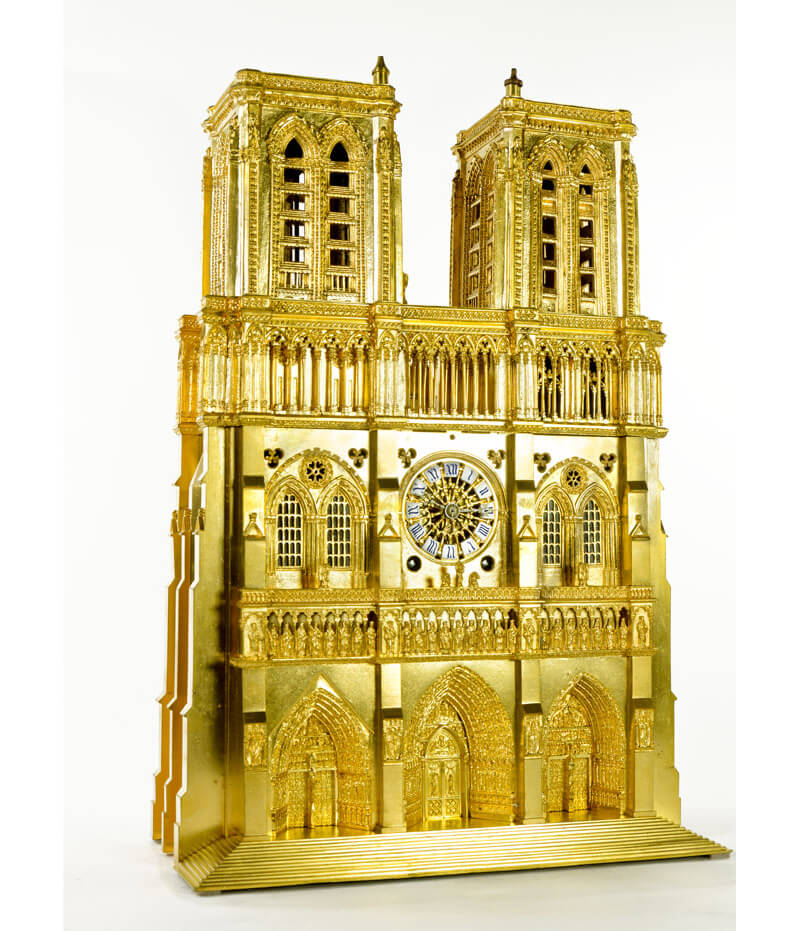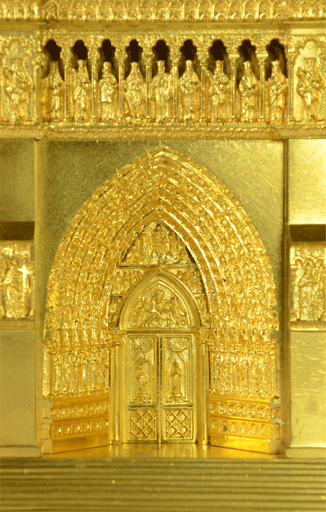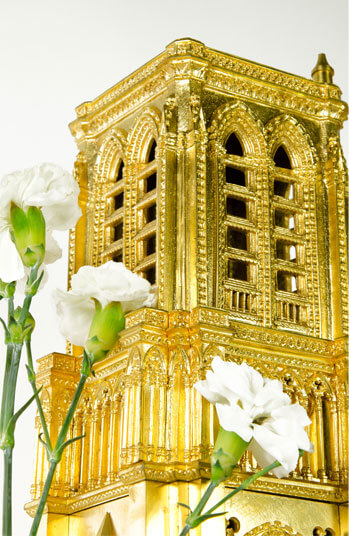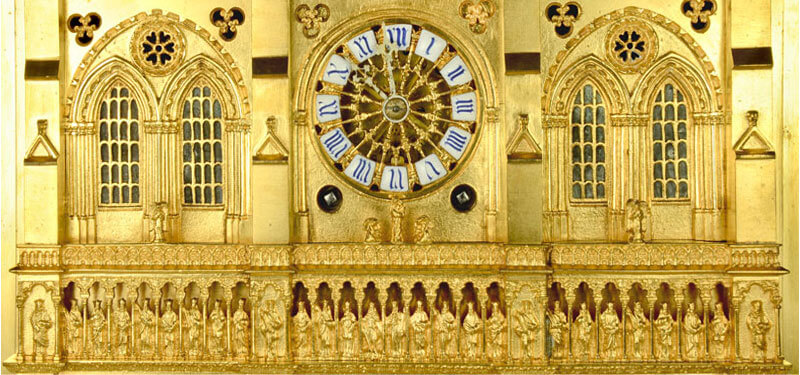Notre Dame Cathedral Clock
clock case by Bavozet Freres et Soeur
clock works by Dumouchel a Paris, ca. 1830
fire-gilded bronze
18″ high
Of the three types of French cathedral clock cases cast by Bavozet Freres et Soeur in the early 19th century, this model of the facade of Notre Dame de Paris is, in our experience, the rarest. We’ve seen several examples of the firm’s two sizes of Rheims cathedral cases and a pair of examples of the Rouen case. And yet, over the years, just this Notre Dame.
Equally obscure is the works maker – ‘F – Dumouchel a Paris’. About him, we’ve uncovered next to nothing.
What do we know? That this case is c. 1830 and, like its French cousins, extravagantly turned out, detailed, and finished in fire-gilded bronze (ormolu). Note the small differences in this cathedral’s two towers, reflecting the slight asymmetries seen in Notre Dame.
In the early 19th century, the process of finishing bronze with gold – fire gilding – involved coating the bronze with an amalgam of mercury and gold, then burning it off. The vaporized mercury, of course, found its way into the workers’ lungs, and many in this trade died early. By the 1830’s in France, fire gilding was outlawed.
This clock is 18” high, retaining its original gilded bronze finish.








